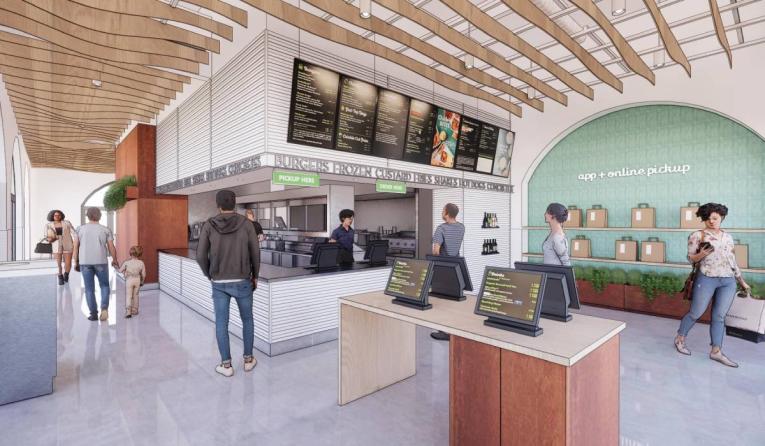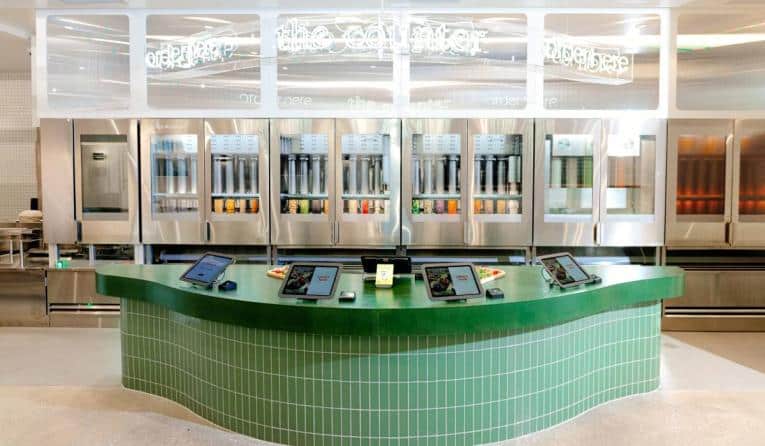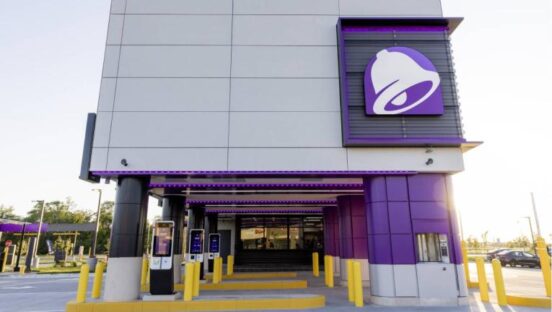To say the last few years have felt like eons wouldn’t be a stretch. But let’s just go back to 2021 for a moment. Consulting giant Deloitte released a restaurant trends report intended to crystal ball the future. The underlying thread was COVID-19 pumped massive uncertainty into the sector as well as disruption. Two-thirds of surveyed consumers at the time said they did not expect to return to pre-pandemic dining habits within six months. The outlook was murky.
But, again, if one COVID theme has endured, it’s that time operated differently. The phrase “new normal” never did the innovation cycle justice. Many of the trends defining headlines today were topics well before COVID—conditions proved more of an accelerant than an inventive force. And so, what’s the fallout? It’s a landscape guests envisioned before 2020, here ahead of schedule.
Deloitte recently released another report—the first since that 2021 drop. It found 55 percent of customers (polled in March 2023) said their rate of in-person dining was actually the same or higher than before the pandemic. Additionally, 69 percent reported they ordered takeout or delivery the same or more frequently than a few years ago. Put simply, COVID did not curb consumers’ appetites the way 2021 cautioned.
However, while the prediction restaurant patronage might never recover was overblown, the way guests interact with brands undeniably shifted. Many preferences that emerged during lockdowns held. Namely, two themes from that 2021 study are still pulsing: ultimate convenience, which was reflected in delivery and takeout growth (back then, food-away-from-home spending was 10 percent higher than pre-virus levels); and the importance of frictionless digital engagement.
Alongside refreshing its 2021 survey data, Deloitte deployed its “future of the consumer industry” analysis to anticipate changes over the next decade. The result, the company said, is it now expects implications for the restaurant sector to fall into three categories: markets (what is sold, who is it being sold to, what products or services create value), models (how businesses organize and configure, how materials and capabilities are sourced, what new models create value), and mechanics (how businesses execute work, how they employ labor, and how they make strategic and operations decisions).
Let’s begin with “value,” which falls into the “markets” bucket. It’s clear 2023 will be defined by a paradox. There’s obvious demand for restaurants, yet many guests are trying to limit spend. Given the broad elevation of prices (9.6 percent in quick service per Revenue Management Systems’ recent report), the “perception of value” has become as vital as the price point itself. According to Kinetic12, a consultancy that works with emerging brands and regularly polls them for trends, there are seven top value definitions:
- 1. Food quality
- 2. Portion size
- 3. Pricing (discounting)
- 4. Service
- 5. Experience
- 6. Cutting corners
- 7. Consistent execution
As the company notes, “great food quality can be almost priceless. A great steak that costs a consumer $50–$100 can be a great value. If it meets or exceeds expectations, price, in many cases, does not come into play. Consistent quality, at any level, is a major key to loyalty.”
Take portion size. Back in September, in an RMS survey, 48 percent of Baby Boomers reported getting less value due to pricing and “shrinkflation.” The concept of “shrinkflation” surfaced in a Bluedot study as well. Guests said they were looking for it and wise to the tactic—77 percent noted they realized they were suddenly paying the same amount for smaller portion sizes.
Kinetic12, in one example, suggests restaurants create two different portions at two prices. The loyal customer can maintain their large size and pay up, or go with the lower price for a smaller plate. It’s transparent. Customers are cognizant of the up-priced climate; just not loyal to being tricked.
“Achieving more consistent execution” was the No. 1 response, at 58 percent, to Kinetic12’s question (120 growth chains polled) of what the biggest opportunities for revenue growth currently are. Innovation and LTOs was No. 2 at 50 percent, followed by expanded catering and family bundles (49 percent), expanded social media presence (43 percent), and optimizing online order and payment (37 percent) to round out the top five. “There is a huge message here,” the company said. “Menus have to remain smaller, with less moving parts for the staff and at the same time, it must be easy for the customer to order, pay, and get their orders. Without consistency, the value proposition changes. Great cannot be ‘sometimes.’ Whatever it is that consumers look for in value requires it to be consistent.”
Deloitte’s consumer data skewed toward value as well. When asked what would persuade them to order from restaurants more frequently, answers rang similar for dine-in and takeout.
Less expensive options
- Dine-in guests: 37 percent
- Takeout guests: 40 percent
Higher-quality product
- Dine-in guests: 19 percent
- Takeout guests: 15 percent
Given current and projected economic concerns, Deloitte said, don’t expect the desire for cost savings to taper off.
To deliver what it terms “effective value” amid evolving preferences, Deloitte said operators should invest in a suite of tools to allow for optionality. Such as:
Personalization engines to provide increasingly targeted discount and marketing campaigns. This could encourage individual spending while upholding profit margins and avoiding overloading guests with too many promotions.
Restaurants could also include increasingly diversified offerings to meet consumers’ changing and niche needs in this continually expanding market. Takeout-oriented restaurants in particular may be a popular model given their lower asset cost.
Finally, Deloitte projects more channel-specific offerings. To enhance restaurants’ sales mix, the company anticipates a rise in channel-specific offers to promote either dine-in or takeout business. These offers will likely fluctuate to align with business and short-term needs.
“The restaurant industry is emerging from the pandemic with a menu full of opportunities to serve its customers, both in the dining room and off-premises,” says Jean Chick, principal, Deloitte Consulting LLP, and U.S. restaurant and foodservice leader. “With large-scale changes on the horizon, driven by advanced technologies and ongoing shifts in consumer demands and preferences, we can expect restaurants to look dramatically different in 10 years. As a result, restaurants should consider implementing various offerings that enable consumers to maximize the dining experience and set up their operations for long-term growth.”

Sixty percent of consumers in Deloitte’s study said they were unlikely to accept lesser quality when ordering takeout food.
The “Models” of change
Returning to an earlier point, COVID was always kindling to trends more than a bringer of change. Headed into 2020, off-premises sales increased nearly four times faster than dine-in business, accounting for roughly 80 percent of restaurants’ U.S. dollar sales growth over the previous three years, according to Rabobank. From pandemic forward, the percentage of mix has slid as dine-in returned, but dollar levels remain, for the most part, elevated over pre-virus numbers.
There are a few dynamics at work. Consumers became comfortable with off-premises options given the extended trials during lockdowns. But also, the platforms and capabilities powering the omnichannel became more sophisticated. Delivery platforms grew. Relationships evolved. Brands from Texas Roadhouse (pay-at-the-table tech) to Another Broken Egg (handheld tablets) to Outback (same as the last) are past the implementation stage and into optimization.
As seen through the pandemic era, restaurants catered to growth outside the four walls through smaller dining rooms, dedicated shelves for pickup, separate service lines for order-ahead, and models like to-go-only prototypes and pickup windows without orderboards.
Deloitte circles back to an initial pillar—frictionless digital experience. The company found, generally, guests prefer to order through a restaurant’s direct channels. In 2023, 40 percent of consumers opted to order direct from the restaurant’s website versus 13 percent who expressed preference for third-party apps or websites. Most respondents (87 percent) also noted they feel a delivery fee of $5 or less is “fair.” Therefore, Deloitte said, to protect digital sales, restaurants should work to make their direct-order channels, including delivery fees, equal to or less expensive than third-party options.
“Another strategy to keep in mind is the continued adoption of digital leading practices across industries,” the company said. “Customers expect the latest digital practices to be adopted across their buying experiences, so restaurants could be wise to look to other industries such as airlines and hotels for inspiration.”
Order confirmation boards are a good example of this in real time, as are screens inside restaurants that display to-go queues. In this past year’s QSR Drive-Thru Report, order accuracy was especially vital to Gen X, with 71 percent getting “angry” when their order was inaccurate. Seventy-three percent said order confirmation screens were “somewhat” or “most important” to their drive-thru visit. A menuboard placed ahead of the ordering speaker (so there was time to review prior to order) was also high at 78 percent. According to Intouch Insight data (QSR’s partner in the Drive-Thru Report), OCBs accounted for a 2 percent increase in order accuracy, and when paired with a verbal confirmation by the employee that the OCB was correct, the study showed an even higher increase—7.5 percent.
The straightforward point is today’s consumer is used to instant gratification in their retail behavior (Amazon) and appreciate the same with food procurement. At the least, consumers expect visual accuracy with ordering that involves a screen, either mobile or at the drive-thru.
Increased usage generally lifts expectations and resets the tradeoff. You can insert that line across myriad COVID developments. The drive-thru is a clear one and so is delivery/takeout. Sixty percent of consumers in Deloitte’s study said they were unlikely to accept lesser quality when ordering takeout food. When service issues do arise, 55 percent said they still prefer to use the phone to address complaints. However, user preference for mobile chat and text increased from 20 percent in 2021 to 27 percent in 2023, while phone bias slid from 63 to 55 percent. Centralizing service recovery, Deloitte said, could deliver cost savings and provide an opportunity to streamline customer experience.
The company added restaurants have the chance to achieve this through centralized support teams that offer multiple communication channels, including mobile chat and text. “While this requires an investment, it could allow restaurants to operate with leaner staffs and meet channel expectations, which are currently being set by third-party apps,” the company said.
On the ever-morphing topic of ghost kitchens, Deloitte’s study discovered 52 percent of consumers would order from one, while 24 percent were indifferent on the subject. That’s essentially on par with 2021 findings. Deloitte said the shift to ghost kitchens would be a longer-term evolution for most. That or they settle into a relationship where restaurants use them to seed demand for future brick-and-mortar growth (read how Dog Haus is doing this). Virtual brands operate out of existing restaurant kitchens of the operator, host locations, or in ghost spaces that are increasingly moving toward more prime real estate than the early days, when they targeted dirt on market boundaries. Their purpose today ranges from relief valve for nearby units to new-concept development to somewhere in the gray middle. Time will shake it out.

As ghost kitchens march on, though, Deloitte expects to see greater efficiency in restaurant design, as mentioned earlier. Shrinking seating layouts and shared locations for multiple concepts can reduce costs while customizing spaces to focus on the core takeout business. “We also expect to see this trend mirrored by the foodservice industry on college campuses and in stadiums and workplace cafeterias,” the company said. “With foodservice through takeout programs, patrons can use familiar channels to get takeout and delivery at dining room-less kitchens.”
Meanwhile, the future will see a raise in capability-as-a-service providers for restaurants. These parties will deliver tech solutions to aid in essential processes. Tapping in, Deloitte said, could enable restaurants to offer cutting-edge capabilities more quickly and efficiently, such as natural language processing, cloud computing, or drone technology. Adoption may vary between large brands and small independents, and could become a key tool in helping mom-and-pop operators deliver on customer expectations set by the giants, the company added.
“Mechanics,” or let’s just call it automation
Deloitte’s survey found a consumer willing to adapt to breakneck tech. Forty-seven percent said they’d order from a restaurant that offered drone/driverless car delivery (the number was 44 percent in 2021). Fifty-three percent added they receive contactless delivery more than half of the time.
With voice-automated ordering systems, 79 percent were at least somewhat likely to return to a restaurant that uses the technology at the drive-thru (here’s a story of a hot dog chain deploying it); that number was 74 percent for voice-automated phone systems; and 70 percent inside the restaurant itself.
Sixty percent of consumers were somewhat likely to order from a kitchen that prepares food (in part) through robotic technologies (it was 54 percent in 2021). In the same vein, 19 percent said they’d experienced foodservice in a cashier-less setup and 62 percent were somewhat likely to order from one if given the opportunity.
READ MORE: AI, Robots, and the Inventive Future of White Castle
Naturally, comfort with these technologies was significantly higher among younger demographics. On average, consumers in the 18–38 age bracket were 16 points more likely to return to restaurants that use automation. “This signals that these technologies will likely continue to be adopted over time,” Deloitte said.
“Looking ahead, we expect to see increasing automation in restaurants,” it added. “Computerization and mechanization won’t be limited to guest-facing technologies. Staff can expect cybernation in their roles for tasks like food temperature and machinery monitoring, as well as predicting equipment maintenance needs.”
It’s a race to improve guest experience through food safety, quality, and order preparation consistency, as well as menu item availability. Once more, a “perceived value” directive that isn’t about replacing people as much as changing roles within restaurants to improve execution.
“With a tight labor market, increasing minimum wages, and growing union pressures, there will likely be greater scrutiny over which tasks must be completed by workers, as opposed to technology,” Deloitte said. “This could either result in lighter restaurant staffing or shifting staff roles toward more customer service-oriented responsibilities.”
As Bubbakoo’s co-CEO Bull Hart recently explained, the goal is to make employees’ jobs easier and more efficient so brands can use less hours, yet not replace them. “I almost feel like we’re going to have the same number of people, just doing different functions. What is that going to do to our restaurant economics?” he said. “Now, we’re not paying minimum wage. I would imagine they’re going to be pretty high-caliber people who are going to figure out how to fix these machines. I think that’ll still be a topic next year—how to make that even easier and how to trust AI and robots more, if they come around.”
Overall, as much as today’s restaurant space isn’t a “new normal,” it is working toward dramatic upheaval of consumer behavior. The pandemic, Deloitte said, “was just the tip of the iceberg.”
“Restaurants likely cannot succeed by holding on to established methods. We anticipate largescale changes on a macroeconomic level. These developments include seismic supply chain shifts, a digital and hybrid tsunami, workforce extremes, and the arrival of a new age of algorithms and automation,” it said.









